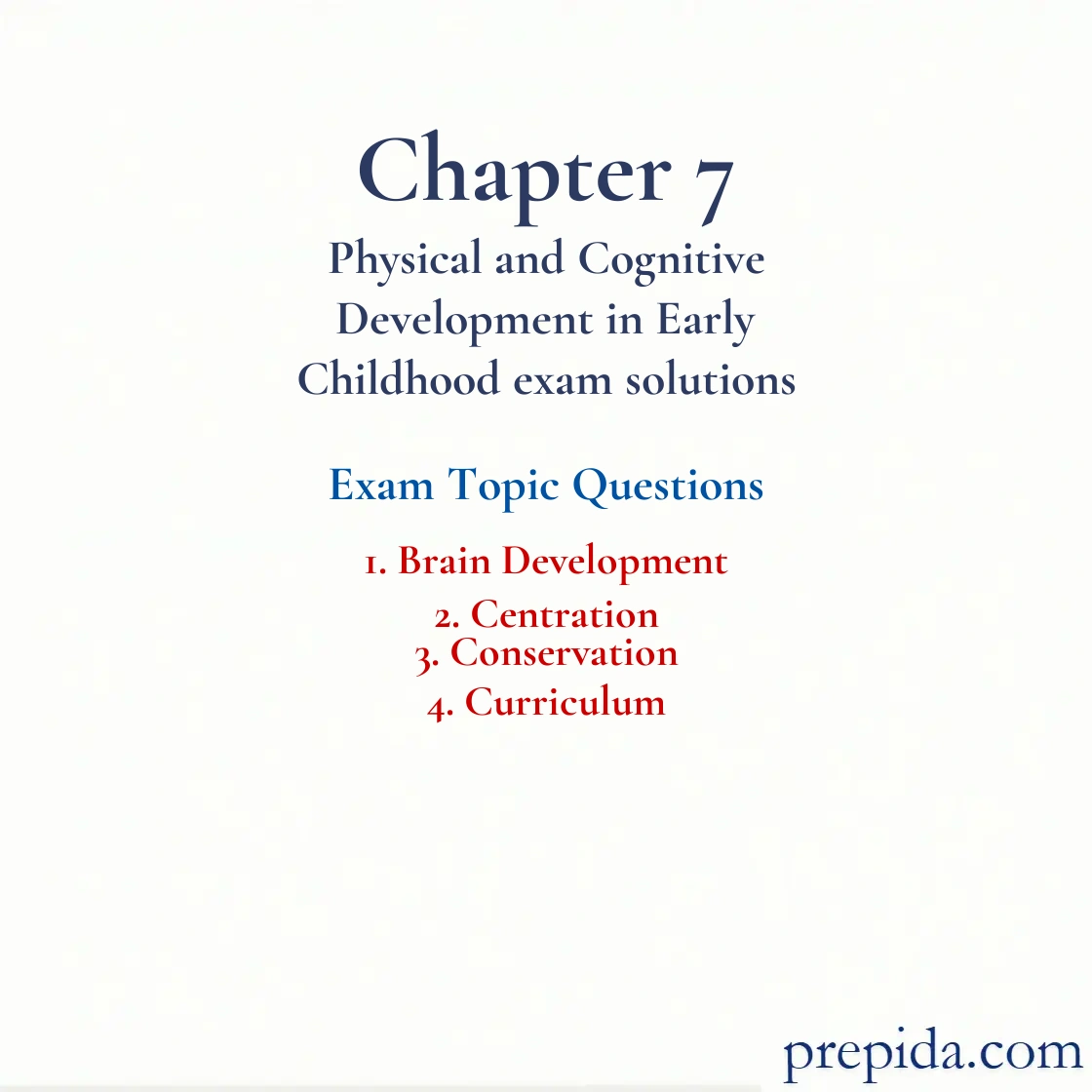
Researchers have found that in children from 3 to 6 years of age the most rapid growth takes place in the ________ lobe areas of the brain.
- temporal
- parietal
- frontal
- occipital
Scientists have discovered that there ________ the brains of children in the 3- to 15-year age range.
- are dramatic changes in local patterns within
- are phenomenal increases in the overall size of
- are insignificant anatomical changes in
- are hardly any internal metamorphisms within
Social Play: Play that involves social interactions with peers.
________ involves an increase in the speed and efficiency of information traveling through the nervous system during brain development in children between the ages of 3 and 5.
- Centration
- Myelination
- Tropism
- Neurogenesis
Myelination: The process by which the nerve cells are covered and insulated with a layer of fat cells, which increases the speed at which information travels through the nervous system.
________ is a process by which the nerve cells are covered and insulated with a layer of fat cells.
- Centration
- Myelination
- Tropism
- Neurogenesis
Myelination: The process by which the nerve cells are covered and insulated with a layer of fat cells, which increases the speed at which information travels through the nervous system.
Which of the following statements about brain development and early childhood is true?
- The development that occurs inside the brain ends at the onset of adolescence.
- By the time a child is 3 years of age, the brain is 25 percent of its adult size.
- By age 6, the brain has reached about 95 percent of its adult size.
- The brain of a five-year-old is 60 percent the size of an adult brain.
Brain Death: A neurological definition of death. A person is brain dead when all electrical activity of the brain has ceased for a specified period of time. A flat EEG recording is one criterion of brain death.
According to Rochel Gelman, ________ is especially important in explaining conservation.
- the age of a child
- heredity
- attention
- intuition
Attention: The focusing of mental resources on select information.
In Piaget's theory, failing the conservation-of-liquid task demonstrates
- that a child is at the sensorimotor stage of cognitive development.
- that a child is unable to think fluidly.
- centration.
- rational thought.
Centration: Focusing attention on one characteristic to the exclusion of all others.
In general, conservation involves the ability to understand that changing an object's appearance
- does not change its basic properties.
- affects its inherent features.
- determines the total volume needed for a given task.
- must be considered before the characteristics of the object can be determined.
Conservation: In Piaget’s theory, awareness that altering an object’s or a substance’s appearance does not change its basic properties.
Diego is 3 years old. His mother pours him and his elder sister orange juice. Because his mother does not have two glasses of the same size, she pours his sister the juice in a taller glass than his. Though both glasses have the same amount of juice, Diego starts to cry because he think his sister has more juice. In the context of cognitive development in early childhood, this scenario illustrates the concept of
- egocentrism.
- centration.
- animism.
- imitation.
Centration: Focusing attention on one characteristic to the exclusion of all others.
Which of the following best describes the relation between centration and conservation?
- conservation requires centration.
- centration is due to the lack of conservation.
- centration is evidenced in young children's lack of conservation.
- conservation is independent of centration.
Conservation: In Piaget’s theory, awareness that altering an object’s or a substance’s appearance does not change its basic properties.
Juan and his little sister, Anne, are each given a large cookie. Their mother breaks Anne's cookie into four pieces to enable her to eat it easily. Juan immediately begins to cry and says that it is not fair that his sister got more cookies than him. Juan is showing a lack of
- constancy.
- conservation.
- intuition.
- symbolic function.
Conservation: In Piaget’s theory, awareness that altering an object’s or a substance’s appearance does not change its basic properties.
According to Feeney, Moravcik, and Nolte (2019), Follari (2019), and Gestwicki (2017), competent early childhood programs should focus
- on cognitive development and socioemotional development.
- exclusively on cognitive development.
- on preoperational skills.
- on academics alone.
Emotion: Feeling, or affect, that occurs when a person is in a state or interaction that is important to him or her. Emotion is characterized by behavior that reflects (expresses) the pleasantness or unpleasantness of the state a person is in or the transactions being experienced.
Two current controversies in early childhood education involve
- the curriculum and universal preschool education in the United States.
- the quality of inner-city schools and free education to all.
- the use of corporal punishment in schools and the use of uniforms.
- Christian holidays for all and boarding schools.